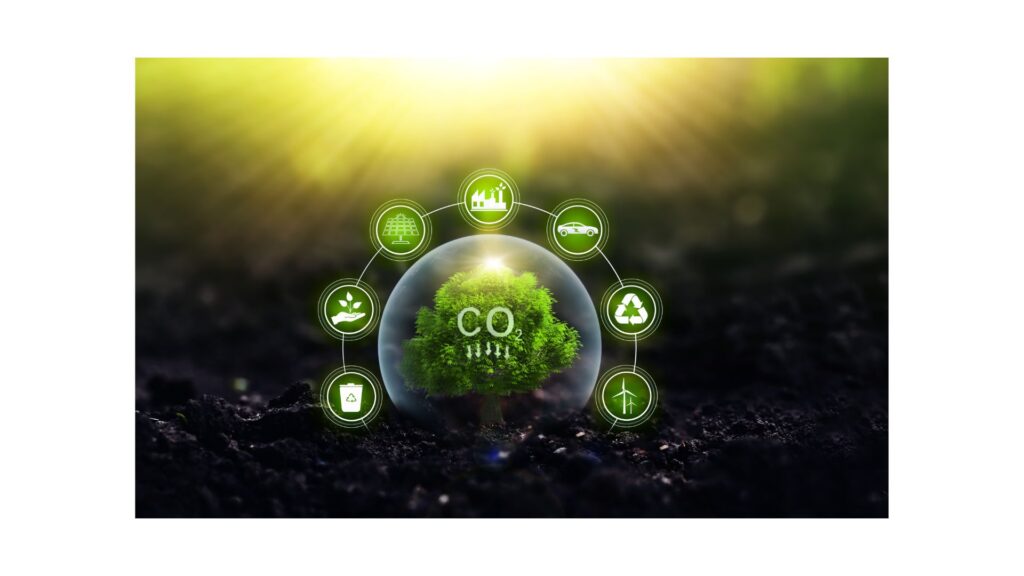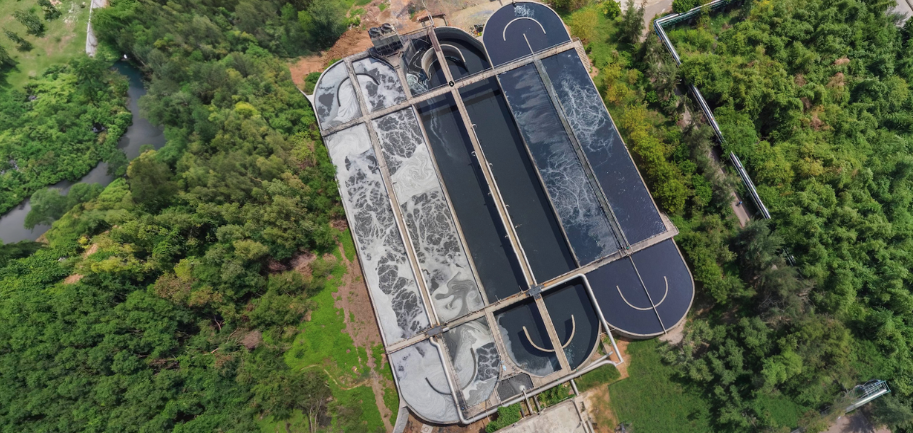Reducing CO₂ is a global priority in the fight against climate change. Carbon dioxide (CO₂) is at the centre of the debate on environmental sustainability and climate change. As one of the main greenhouse gases responsible for global warming, CO₂ is a critical focus for industries and governments worldwide. Many sectors are implementing strategies to reduce CO₂ emissions, and the water treatment industry plays a key role in this global effort. Often overlooked, the water sector offers concrete and measurable solutions to decrease the carbon footprint and foster a low-emissions future.

With innovative technologies and optimised processes, WaterNext contributes to the decarbonisation of the water sector by reducing energy consumption and minimising the use of chemicals in water purification and distribution processes. This integrated approach not only lowers emissions but also supports sustainable development goals (SDGs).
THE LINK BETWEEN WATER AND CO₂ EMISSIONS
Water management is an energy-intensive activity with a significant impact on CO₂ emissions. Every stage of the water cycle requires substantial amounts of energy, especially if outdated or inefficient technologies are used. The main sources of emissions in the water sector include:
💧 Pumping and distribution of water: transporting water through aqueducts, reservoirs, and water networks often demands large quantities of electricity. In many cases, this represents one of the highest energy consumption items for municipalities and utilities, especially in regions with complex or extended infrastructures;
💧 Wastewater treatment: sewage treatment plants not only consume electricity but also generate greenhouse gases. In addition to CO₂, biological processes in wastewater treatment can produce methane (CH₄) and nitrous oxide (N₂O), both of which have a much higher global warming potential than CO₂;
💧 Production and transport of chemicals: water treatment processes frequently rely on chemicals such as coagulants, flocculants, and disinfectants. The production and distribution of these chemicals contribute to indirect CO₂ emissions, increasing the overall carbon footprint of water management systems.

HOW WATERNEXT REDUCES CO₂ IMPACT
WaterNext promotes cutting-edge technological solutions that make water management more sustainable. Our focus is on energy efficiency, chemical reduction, and digital transformation to ensure that water treatment is both environmentally and economically viable.
💧 Low-energy technologies:
🍀 Advanced filtration systems and reverse osmosis (RO) units designed for reduced energy consumption, especially in desalination and ultrapure water production;
🍀 Energy recovery from sludge treatment, biogas production, and thermal exchange processes, turning waste into a resource;
🍀 High-efficiency pumps and smart pumping systems that adapt to demand, significantly lowering electricity usage.
💧 Reducing the use of chemicals:
🍀 Optimised coagulation and flocculation systems, supported by AI-based control strategies, that reduce the need for chemical dosing while maintaining performance;
🍀 Use of biological treatment methods such as MBBR (Moving Bed Biofilm Reactor) which leverage natural processes to purify water without harmful by-products.
💧 Digitisation and intelligent monitoring:
🍀 IoT platforms and real-time sensors that monitor water quality and operational performance, enabling timely interventions and reducing resource waste;
🍀 Predictive analytics and data-driven maintenance strategies that extend equipment life, improve efficiency, and cut unnecessary energy use.
THE BENEFITS OF WATERNEXT SOLUTIONS
Adopting WaterNext technologies means more than just complying with environmental regulations – it represents a step towards true climate responsibility. Our sustainable water treatment solutions provide measurable benefits:
💧 Significant energy savings, thanks to efficient systems and optimised operations;
💧 Reduction in chemical usage, which leads to fewer emissions, lower operating costs, and safer working environments;
💧 Lower greenhouse gas emissions, contributing directly to corporate ESG goals and global climate commitments.
THE FUTURE OF SUSTAINABLE WATER MANAGEMENT

Around the world, companies, municipalities, and public institutions are accelerating their journey toward net-zero emissions. The decarbonisation of the water sector is a vital part of this transition. WaterNext is at the forefront, helping clients develop and implement high-performance water treatment systems that respect both the environment and economic sustainability.
Water is not just a resource – it’s a vehicle for positive change. Through innovation, efficiency, and collaboration, WaterNext is shaping a more sustainable water future.
Ready to make a difference?
Find out how WaterNext can help you achieve your sustainability goals and reduce CO₂ emissions – one drop at a time.
Follow us on LinkedIn and explore the Technologies section on our website to learn more.

Comments are closed